Ultimate Guide to Croatia’s National Parks
One of the best ways to experience Croatia’s natural beauty is by visiting its national parks.
From cascading waterfalls to preserved biodiversity, ancient forests, and breathtaking coastal vistas, Croatia’s national parks offer a diverse range of landscapes and outdoor adventures.
In this article, we will delve into the world of Croatia’s national parks, exploring ticket information, available tours, and essential gear for a memorable and enjoyable visit.
Plitvice Lakes National Park: Nature’s Masterpiece
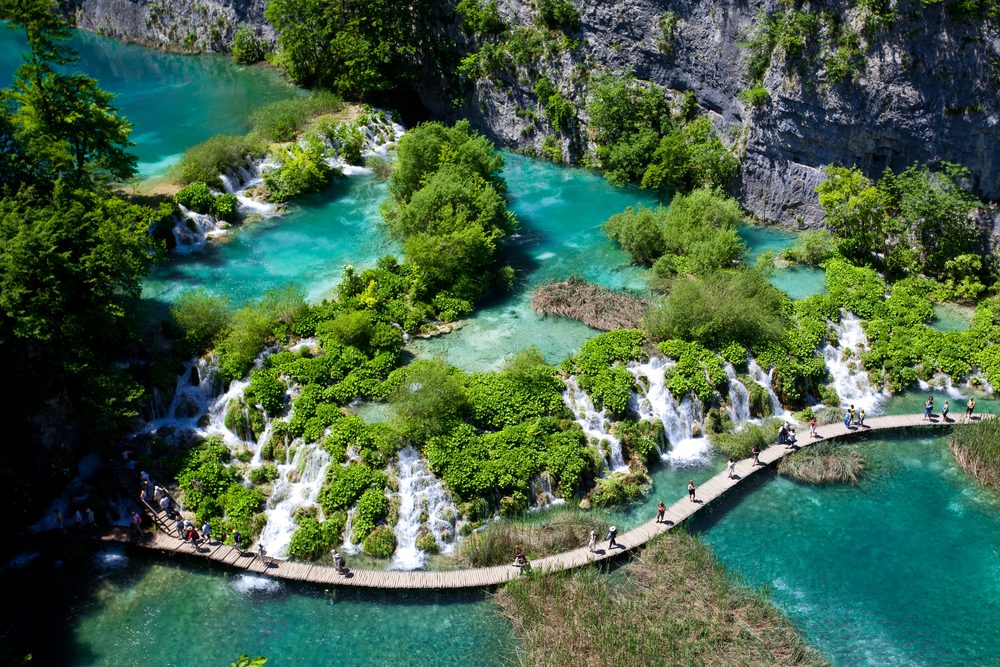
Plitvice Lakes National Park, a UNESCO World Heritage site, is undoubtedly one of Croatia’s most famous national parks.
As Croatia’s oldest and most famous national park, Plitvice Lakes is renowned for its mesmerizing network of 16 interconnected lakes, countless waterfalls, and lush forested surroundings.
Exploring the park’s network of wooden footbridges and hiking trails allows visitors to witness the park’s beauty up close.
Purchasing tickets in advance, especially during the peak tourist season, is advisable to make the most of your visit.
Online ticket portals offer various ticket options and combinations for a personalized experience.
Guided tours allow visitors to explore the park’s well-maintained wooden walkways and admire the park’s most captivating sights, such as the iconic Veliki Slap waterfall.
Essential gear for this park includes comfortable walking shoes, a waterproof jacket, and a camera to capture the park’s ethereal beauty.
Here are some tips to keep in mind when visiting Plitvice Lakes National Park:
- Plan your visit in advance: Check the official website of the national park for up-to-date information on opening hours, ticket prices, and any restrictions or special events. During peak tourist season, booking your tickets online in advance is advisable to avoid long queues.
- Choose the right time to visit: Plitvice Lakes is beautiful year-round, but the park can get crowded during summer. Consider visiting in the shoulder seasons (spring or autumn) to enjoy the park with fewer tourists and pleasant weather.
- Wear appropriate clothing and footwear: The park involves a lot of walking and hiking, so wear comfortable shoes suitable for uneven terrain. Dress in layers to accommodate changing weather conditions, and bring a waterproof jacket in case of rain.
- Stay on designated paths and trails: Plitvice Lakes is a protected area, and respecting the park’s rules is important. Stick to the marked paths and trails, and avoid straying into restricted or off-limits areas. This helps preserve the natural beauty of the park and ensures your safety.
- Carry water and snacks: Exploring the park can be physically demanding, so staying hydrated and energized is essential. Bring a reusable water bottle and snacks to fuel yourself throughout the day. However, avoid feeding any wildlife you may encounter.
- Bring a camera or smartphone: Plitvice Lakes offers countless breathtaking views and photo opportunities. Don’t forget to capture the stunning landscapes, waterfalls, and wildlife you encounter. Remember to bring extra batteries or a portable charger, as you’ll likely be taking many pictures.
- Be mindful of the environment: Plitvice Lakes National Park is a UNESCO World Heritage site, and it’s crucial to help protect its natural resources. Dispose of trash responsibly by using designated bins, and avoid leaving any litter behind. Respect the wildlife and plants by observing them from a distance and not disturbing their habitats.
- Take advantage of the park’s transportation options: Plitvice Lakes has a well-organized transportation system that includes shuttle buses and electric boats. Utilize these services to reach different areas of the park more efficiently and explore its various sections.
- Allow ample time to visit: The park is vast, and there is much to see and experience. Plan for a full day or more to fully appreciate the beauty of Plitvice Lakes. Take your time, enjoy the scenery, and take breaks whenever needed.
- Consider guided tours or park guides: If you want a more in-depth understanding of the park’s history, flora, and fauna, consider hiring a guide or joining a guided tour. They can provide valuable insights and enrich your overall experience.
- Remember to check the official website: or contact the park authorities directly for the most accurate and up-to-date information before your visit.
Krka National Park: Where Waterfalls Meet History
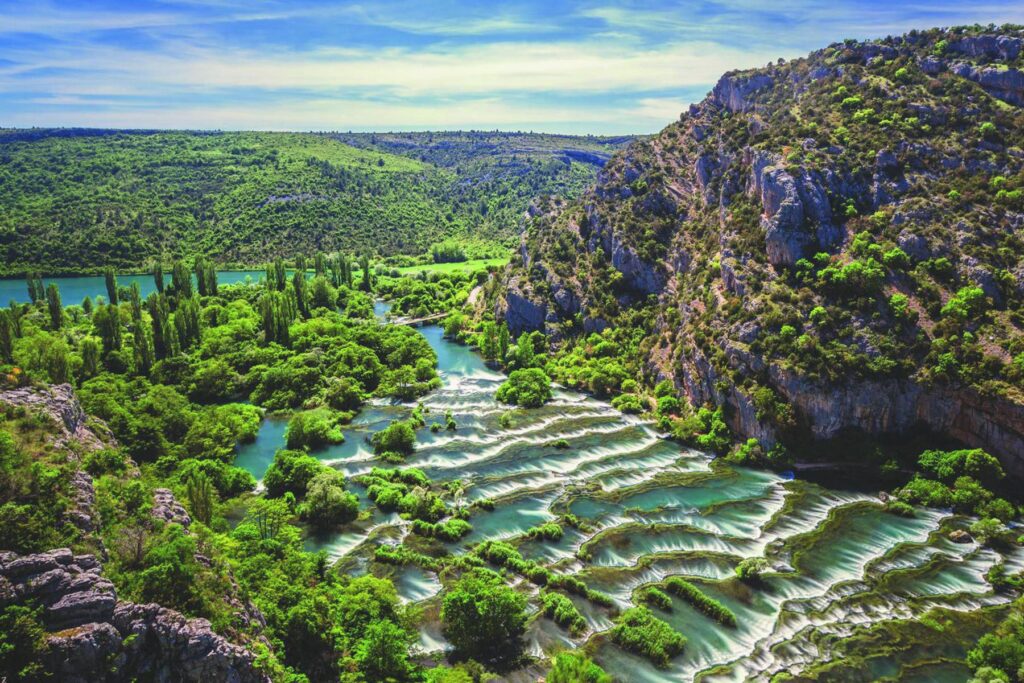
Located in central Dalmatia and situated along the Krka River, Krka National Park captivates visitors with its series of cascading waterfalls, picturesque islands, and diverse flora and fauna.
One of the highlights of Krka is the opportunity to swim in the crystal-clear waters of Skradinski Buk, the park’s largest waterfall cascading over a natural barrier, creating a picturesque scene.
In addition to its natural wonders, Krka National Park is home to several historical sites, including the Krka Monastery and the archaeological site of Burnum.
To access the park, visitors are required to purchase entrance tickets, which can be obtained online or at the park’s entrance.
During the peak season, it’s advisable to join organized tours to ensure a hassle-free visit.
To access the park, tickets can be purchased online or at the park entrance. Visitors can also take boat tours to explore the park’s remote areas, including the enchanting Visovac Island and the dramatic Roški Slap waterfall.
Essential gear for Krka National Park includes a swimsuit, a towel, water shoes, and a sun hat.
When visiting the Krka National Park, here are some tips to make the most of your experience:
- Plan your visit in advance: Check the park’s official website for information on opening hours, ticket prices, and any special events or closures. It’s a popular destination, so consider visiting during weekdays or earlier in the morning to avoid crowds.
- Choose the right time of year: The park is beautiful year-round, but the waterfalls are most impressive during the wetter months of spring and autumn. Summer can be crowded, but it’s a great time for swimming in the park’s lakes and rivers.
- Wear appropriate clothing and footwear: As you’ll be walking on various terrains, it’s important to wear comfortable shoes suitable for hiking. Bring a hat, sunscreen, and insect repellent, especially in summer.
- Bring a swimsuit and towel: The park offers several areas where visitors can swim in crystal-clear waters. Don’t miss the opportunity to take a refreshing dip, so pack your swimwear and a towel.
- Follow designated trails and paths: To protect the park’s delicate ecosystem, stick to the marked trails and paths. This will help preserve the natural environment and ensure your safety.
- Bring water and snacks: Exploring the park can be tiring, so carry enough water to stay hydrated throughout your visit. Pack some snacks or a picnic lunch to enjoy in one of the designated picnic areas.
- Take your time and enjoy the scenery: The park is known for its stunning waterfalls, lakes, and lush greenery. Take your time to admire the beauty of the surroundings and capture some memorable photos.
- Consider taking a boat tour: To see the park from a different perspective, take a boat tour along the river. This allows you to witness the waterfalls up close and provides a unique experience.
- Be mindful of wildlife and nature: The park is home to various plant and animal species. Respect the wildlife by not feeding or disturbing them. Remember to bring a camera or binoculars for wildlife spotting opportunities.
- Leave no trace: Help preserve the park’s natural beauty by taking your trash with you and following the principles of “Leave No Trace.” This includes disposing of waste properly and respecting the environment.
Paklenica National Park: A Paradise for Hikers and Climbers
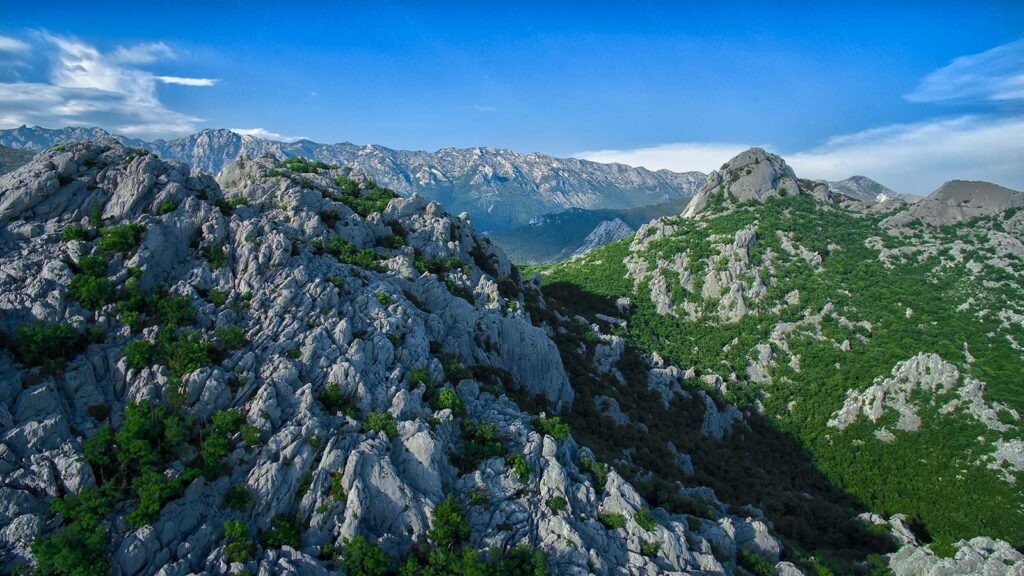
For adventure seekers and outdoor enthusiasts, Paklenica National Park is a must-visit destination.
Situated in the Velebit mountain range, the park offers a rugged terrain ideal for hiking and rock climbing.
Its imposing cliffs, deep canyons, and dense beech forests create a breathtaking backdrop for nature lovers.
Guided tours and equipment rental services are available for beginners, experienced climbers, and those who want to make the most of their experience.
For those seeking adventure amidst stunning mountain landscapes, Paklenica National Park is a paradise for hikers, climbers, and nature lovers.
The park encompasses the Velebit mountain range, offering numerous trails of varying difficulty levels.
Tickets can be purchased at the park entrance, and it is advisable to check the weather conditions before planning a visit.
Essential gear for Paklenica National Park includes sturdy hiking boots, a backpack, a map, a compass, and sufficient water and snacks.
When visiting National Park Paklenica, located in Croatia, here are some tips to make the most of your experience:
- Plan ahead: Research the park’s website or visitor center to gather information about the park’s trails, facilities, and any permits or fees required. This will help you plan your visit accordingly.
- Choose the right time to visit: The best time to visit Paklenica National Park is during the spring and autumn months when the weather is mild, and the park is less crowded. Summers can get quite hot, so carry enough water and sunscreen.
- Wear appropriate clothing and footwear: As you explore hiking trails and rugged terrain, it’s important to wear comfortable, sturdy shoes suitable for walking on uneven surfaces. Dress in layers to accommodate changing weather conditions, and consider bringing rain gear during the rainy season.
- Pack essentials: Carry a daypack with water, snacks, a first aid kit, insect repellent, and a map or guidebook. It’s also a good idea to bring a hat, sunglasses, and sunscreen to protect yourself from the sun.
- Follow park regulations: Respect the rules and regulations of the park, including staying on designated trails, not littering, and not disturbing wildlife. Be aware of any fire restrictions, and always extinguish your campfires properly.
- Take advantage of guided tours: Joining a guided tour or hiring a local guide can enhance your experience by providing insights into the park’s flora, fauna, and history. They can also help you navigate the trails and ensure your safety.
- Stay hydrated and nourished: Carry an ample water supply to stay hydrated throughout your visit. Additionally, pack energy-rich snacks or meals to keep your energy levels up during hikes and explorations.
- Capture the memories: Don’t forget to bring a camera or smartphone to capture the stunning landscapes and wildlife you encounter. However, remember to respect the park’s guidelines regarding drone usage and wildlife disturbance.
- Be aware of your physical abilities: Some trails in Paklenica National Park can be challenging, so assess your fitness level before choosing a route. If you’re unsure, opt for easier trails or consult with park staff for recommendations based on your abilities.
- Stay overnight: Consider extending your visit by camping or staying in one of the park’s accommodations. Spending more time in the park allows you to explore different areas, enjoy sunsets and sunrises, and experience the park’s serene ambiance.
- Always prioritize safety and conservation when visiting any national park.
Brijuni National Park: An Oasis of Natural and Historical Splendor
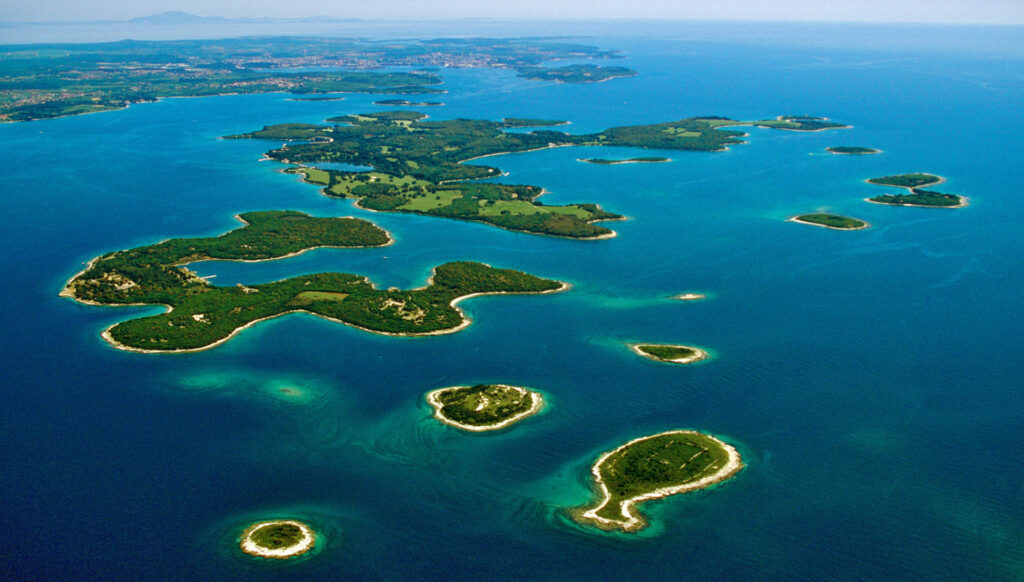
Located off the Istrian Peninsula, Brijuni National Park combines natural wonders and historical heritage.
Comprised of fourteen islands, the park is home to diverse flora and fauna, including herds of deer and exotic bird species.
Brijuni’s historical significance is showcased through ancient Roman ruins, a Byzantine castrum, and remnants of a 1st-century olive oil production complex.
To explore the park, visitors can take a guided tour, which includes a panoramic train ride and a visit to the safari park, where native and exotic animals roam freely.
Tickets for the National Park Brijuni can be purchased at the park’s ticket office, online, or through authorized travel agencies.
Essential gear for Brijuni National Park includes comfortable walking shoes, sunscreen, insect repellent, and binoculars for bird watching.
When visiting the Brijuni National Park, here are some tips to make the most of your experience:
- Plan your visit in advance: Check the park’s opening hours, ticket availability, and any special events or activities happening during your visit. Having a clear plan to make the most of your time, there is always a good idea.
- Book tickets in advance: To avoid long queues and ensure entry, consider booking your tickets online or in advance. This will save you time and guarantee your visit.
- Wear comfortable clothing and footwear: The park is spread across several islands and includes diverse terrain, so comfortable walking shoes or sneakers are recommended. Additionally, dress in layers, as the weather can change throughout the day.
- Bring sunscreen and insect repellent: Protect yourself from the sun by applying sunscreen regularly, especially during summer. Also, consider bringing insect repellent to guard against mosquitos and other insects, particularly if you plan to explore wooded areas.
- Carry drinking water and snacks: It’s a good idea to bring a water bottle and some snacks, especially if you plan on spending a significant amount of time exploring the park. Facilities are available, but having your own supplies will ensure you stay hydrated and energized.
- Respect the environment and wildlife: Brijuni National Park is known for its diverse flora and fauna. Be respectful of the natural environment by not littering and refraining from disturbing or feeding wildlife. Admire the animals from a safe distance and avoid getting too close or causing any harm.
- Follow park rules and guidelines: Familiarize yourself with the park’s rules and regulations, including any restricted areas or activities. It’s important to respect these guidelines to ensure the safety of yourself and others and preserve the park for future visitors.
- Take advantage of guided tours: The park offers guided tours that provide valuable insights into the area’s history, nature, and cultural heritage. Consider joining one of these tours to enhance your understanding and appreciation of the park.
- Capture memories responsibly: Photography is allowed in most areas of the park, but be mindful of your surroundings and avoid causing disturbances while taking pictures. Respect any signage that prohibits photography in certain areas.
- Relax and enjoy the experience: Brijuni National Park is a stunning natural and historical treasure. Take your time to soak in the beauty of the landscapes, enjoy the fresh air, and appreciate the unique features that make this park special.
Mljet National Park: Exploring the Enchanting Beauty
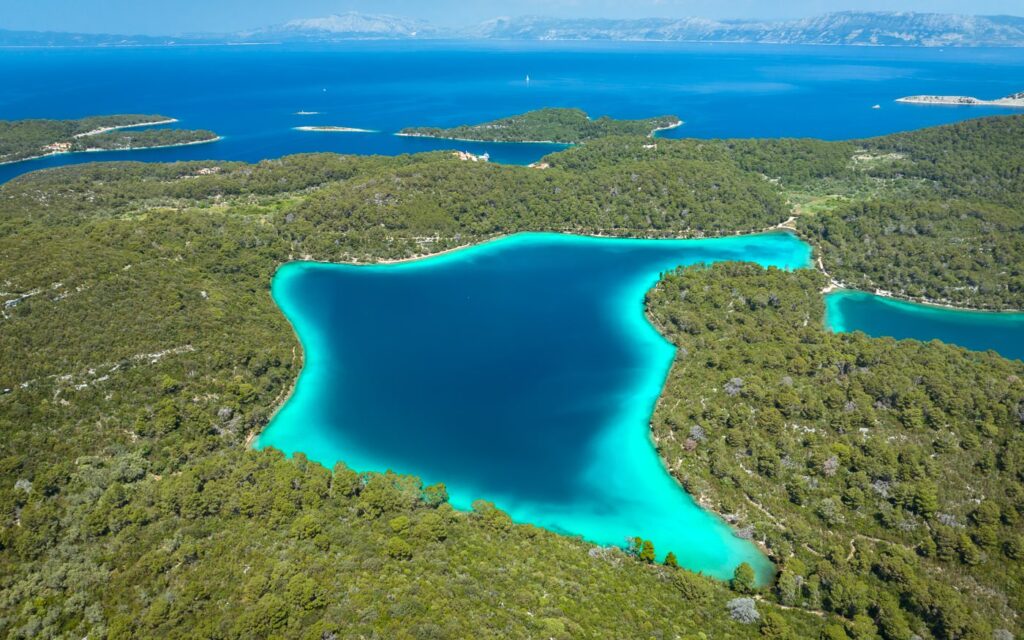
Situated on the tranquil island of Mljet, Mljet National Park is a picturesque destination with its lush forests, crystal-clear lakes, and historical sites.
To enter the park, tickets can be purchased at the park entrance or online. Guided boat tours are available, allowing visitors to explore the park’s two saltwater lakes, Veliko and Malo Jezero.
The small islet of Sveta Marija, located in Veliko Jezero, houses a Benedictine monastery worth visiting.
Hiking and cycling trails provide opportunities to discover the park’s diverse flora and fauna.
Essential gear for Mljet National Park includes comfortable walking shoes, swimwear, a towel, a sun hat, and sunscreen.
When visiting the mesmerizing National Park Mljet, here are some tips to enhance your experience:
- Plan your visit: Before going to the park, research the opening hours, ticket prices, and any specific rules or regulations you need to follow. It’s also good to check the weather forecast to ensure you have appropriate clothing and gear.
- Bring essentials: Carry a backpack with essentials such as water, snacks, sunscreen, insect repellent, a hat, comfortable walking shoes, and a camera to capture the stunning landscapes.
- Explore the two saltwater lakes: Mljet National Park is famous for its two saltwater lakes, Veliko and Malo Jezero. Rent a kayak, paddleboard, or small boat to explore the lakes and discover their natural beauty. You can also swim in the lakes, so don’t forget your swimwear.
- Visit St. Mary Island: Take a boat ride to St. Mary Island in the middle of Veliko Jezero. Explore the ancient Benedictine monastery dating back to the 12th century and enjoy the tranquility of the island’s surroundings.
- Hike or cycle the trails: Mljet offers several hiking and cycling trails that allow you to explore the park’s diverse flora and fauna. Follow the designated paths and enjoy the scenic views along the way. There are also guided tours available if you prefer to have an expert show you around.
- Take breaks and enjoy the scenery: Mljet National Park is known for its stunning natural landscapes, including dense forests, rocky shores, and crystal-clear waters. Take breaks during your visit to simply sit, relax, and appreciate the beauty around you.
- Respect the environment: Help preserve the park’s pristine nature by respecting the rules and regulations. Avoid littering, stay on designated paths, and not disturb wildlife or plant life. Be mindful of the delicate ecosystem and leave the park as you found it.
- Visit Polače: If you have time, explore the small town of Polače near the national park entrance. Discover its ancient Roman ruins, including the impressive palace and the remains of a basilica.
- Stay overnight: If you want to immerse yourself in the park’s atmosphere fully, consider staying overnight. The national park offers accommodations, including campsites and guesthouses, where you can experience the park’s tranquility after the day-trippers have left.
- Check for any updates or changes: Before your visit, check the official website or contact the park authorities to ensure there are no unexpected closures, changes in rules, or specific events during your intended visit.
Kornati National Park: Mesmerizing Archipelago
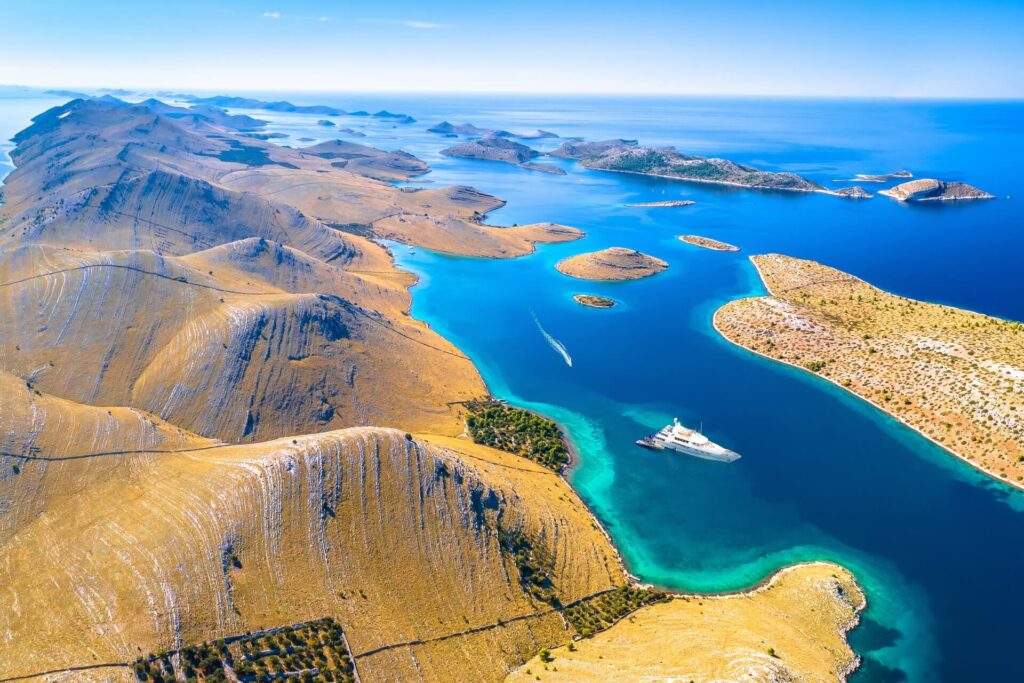
For those seeking a maritime adventure, Kornati National Park, an archipelago in the Adriatic Sea, is a must-visit.
To access the park, tickets can be purchased at local marinas or online. Guided boat tours offer the best way to explore the park’s 89 stunning islands, islets, and reefs.
These tours provide opportunities for swimming, snorkeling, and diving in the park’s clear turquoise waters, teeming with marine life.
It is advisable to bring your snorkeling gear and a waterproof camera to capture the mesmerizing underwater world.
Don’t forget to pack sunscreen, a hat, and a light jacket for boat trips.
When visiting the Kornati National Park, here are some tips to make the most of your experience:
- Plan your visit: Check the park’s official website or contact the park authorities in advance to gather information about entry fees, permits, guided tours, and any specific rules or regulations that apply to visitors.
- Choose the right time to visit: The park is open year-round, but the best time to visit is during the summer months (June to September) when the weather is pleasant for outdoor activities and the sea is suitable for swimming and diving. However, keep in mind that summer months can be crowded, so consider visiting during the shoulder seasons for a more serene experience.
- Boat trip or guided tour: The Kornati National Park consists of numerous islands, islets, and reefs. To explore the park, you’ll need a boat. You can either rent a private boat or join a guided tour. Guided tours offer informative commentary and ensure you visit the most scenic spots while adhering to park regulations.
- Pack essentials: As you’ll be spending most of your time outdoors, it’s crucial to pack essentials such as sunscreen, a hat, sunglasses, comfortable clothing, and sturdy footwear. Bring a waterproof bag to keep your belongings safe and dry. Don’t forget to carry drinking water and snacks, especially if you’re planning a full-day excursion.
- Respect the environment: Kornati National Park is a protected area, so respecting its natural beauty and wildlife is essential. Follow the designated paths and trails, and avoid littering. Take your trash with you and dispose of it properly. Remember, the goal is to leave no trace behind.
- Snorkeling and diving: The Kornati archipelago is renowned for its crystal-clear waters and vibrant marine life. If you enjoy snorkeling or diving, bring your equipment along. You can explore underwater caves, observe diverse fish species, and discover the stunning coral reefs.
- Photography opportunities: Kornati National Park offers breathtaking views and unique landscapes, making it a paradise for photography enthusiasts. Capture the rugged coastline, picturesque islands, and stunning sunsets. Don’t forget to charge your camera batteries and bring extra memory cards.
- Wildlife spotting: While exploring the park, keep an eye out for various bird species, such as seagulls and falcons. Dolphins are also occasionally spotted in the area. Respect their natural habitat and observe from a distance to avoid disturbance.
- Overnight stays: If you wish to spend more time in the park, consider staying overnight. There are camping areas and a few private accommodations available on certain islands. However, make sure to inquire about permits and restrictions for overnight stays in advance.
- Enjoy the tranquility: The Kornati National Park is known for its pristine beauty and tranquility. Take the time to appreciate the peaceful surroundings, enjoy the sound of the waves, and relax in nature’s embrace.
- Remember always to prioritize safety during your visit, listen to instructions from park authorities or tour guides.
Risnjak National Park: Wildlife Adventure
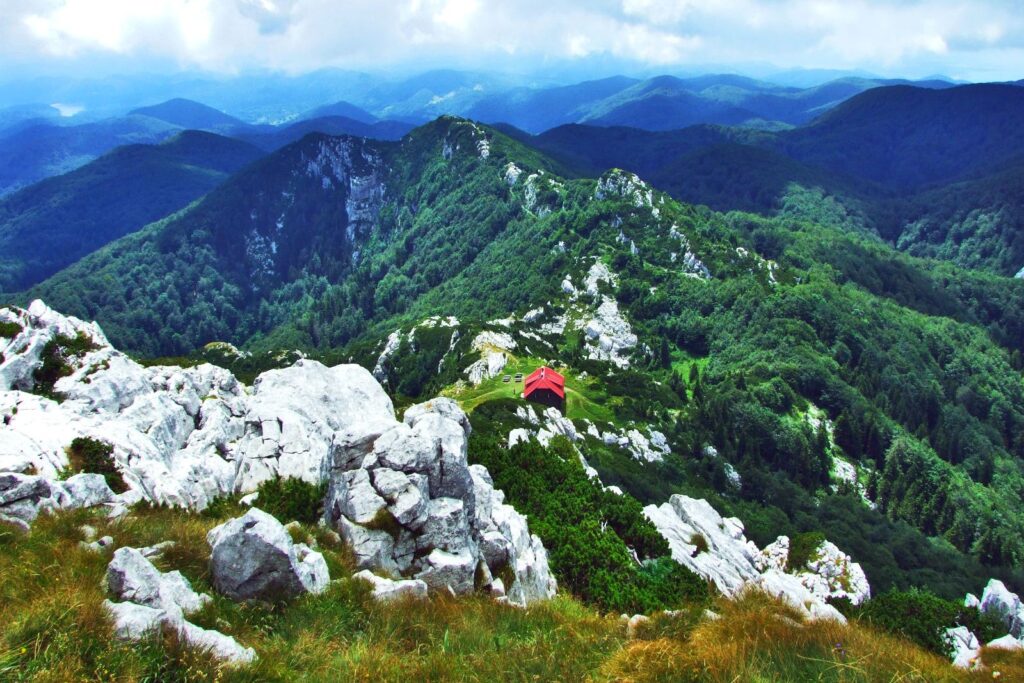
Tucked away in the Gorski Kotar region, where the Alps meet the magnificent Dinaric Alps, Risnjak National Park is a haven for nature enthusiasts seeking tranquility and breathtaking vistas.
From rugged mountains and cascading waterfalls to lush forests and rare wildlife, Risnjak National Park is a haven for nature enthusiasts and adventure seekers alike.
Risnjak National Park takes its name from Mount Risnjak, the highest peak in the region standing at 1,528 meters above sea level. The park’s dramatic landscape is dominated by this majestic mountain, with its distinctive shape visible from miles away.
Visitors to the park are rewarded with breathtaking panoramic views of the surrounding countryside, including the Adriatic Sea, Istria, and Kvarner Bay.
One of the park’s most remarkable features is its rich biodiversity. Risnjak National Park is home to a remarkable array of plant and animal species, many of which are rare and protected.
The park’s forests are a mix of beech, fir, and spruce trees, creating a serene and enchanting atmosphere. Wildflowers and herbs carpet the forest floor, adding splashes of color to the landscape.
The park’s wildlife is equally impressive. Risnjak is known for its diverse bird population, with over 100 species recorded within its boundaries. Birdwatchers will be delighted to spot species such as the golden eagle, peregrine falcon, and hazel grouse.
Additionally, Risnjak is home to several large mammals, including deer, wild boars, and chamois. However, the park’s most iconic resident is undoubtedly the lynx, after which the park was named.
The Eurasian lynx, a critically endangered species, finds refuge in the park’s dense forests, making it a prime location for wildlife conservation efforts.
For outdoor enthusiasts, Risnjak National Park offers many activities to engage in.
Hiking is a popular choice, with a network of well-marked trails guiding visitors through the park’s breathtaking landscapes.
The park’s diverse topography means routes are suitable for all fitness and experience levels. Adventurous souls can tackle the challenging ascent to Mount Risnjak’s summit. At the same time, those seeking a more relaxed experience can explore the picturesque valley of Leska or stroll along the banks of the Kupa River.
Risnjak transforms into a snowy wonderland during the winter months, attracting winter sports enthusiasts. Cross-country skiing and snowshoeing are popular activities, allowing visitors to experience the park’s serene beauty in a whole new way.
The park’s ski resort, Platak, offers a range of facilities for skiing and snowboarding, making it an ideal destination for winter sports enthusiasts of all ages and skill levels.
In addition to its natural wonders, Risnjak National Park also boasts a rich cultural heritage. The park’s visitor center provides valuable insights into the area’s history, geology, and ecology through interactive exhibits and educational programs.
Guided tours and workshops are available, giving visitors the opportunity to delve deeper into the park’s fascinating features.
Visitors can purchase tickets at the entrance or online to enter the park.
Essential gear for Risnjak National Park includes comfortable hiking boots, layered clothing, a backpack, a water bottle, and a camera to capture the park’s beauty.
When visiting National Park Risnjak, here are some tips to make the most of your visit:
- Plan your visit: Check the official website or contact the park authorities to gather information about the park’s opening hours, entrance fees, and any specific regulations or restrictions that may be in place during your visit. This will help you plan your trip accordingly.
- Dress appropriately: Wear comfortable and sturdy footwear for hiking and outdoor activities. The weather in the park can be unpredictable, so it’s a good idea to dress in layers and bring rain gear or a jacket.
- Carry essential items: Bring a map of the park, a compass or GPS device, a first aid kit, sunscreen, insect repellent, and plenty of water and snacks. It’s important to stay hydrated and nourished while exploring the park.
- Follow the marked trails: Stick to the designated trails and follow the signage provided within the park. This will ensure your safety and minimize the impact on the natural environment. Straying off the trails can be dangerous and may disturb the wildlife.
- Wildlife observation: National Park Risnjak is known for its diverse wildlife, including the rare lynx. Be respectful of the animals and maintain a safe distance. Avoid feeding or approaching them, as it can disrupt their natural behavior and may even be dangerous.
- Capture the beauty: The park offers stunning natural landscapes and breathtaking views. Don’t forget to bring your camera to capture the beauty of the area, but also take moments to appreciate the scenery without a lens.
- Leave no trace: Help preserve the park’s natural beauty by following the “Leave No Trace principles.” Take all your trash with you and dispose of it properly outside the park. Respect the environment and leave it as you found it.
- Visit the Visitor Center: Stop by the park’s visitor center to gather additional information, learn about the park’s history and ecology, and get recommendations on the best trails and attractions to explore.
- Check for guided tours or activities: National Park Risnjak may offer guided tours or educational programs. Check in advance if any such activities are available during your visit. These can enhance your experience and provide valuable insights into the park’s flora, fauna, and conservation efforts.
- Respect the rules: Follow all park rules and regulations, including those regarding camping, campfires, and picnicking. These rules are in place to protect the park and ensure the safety of visitors.
Northern Velebit National Park: Untamed Beauty
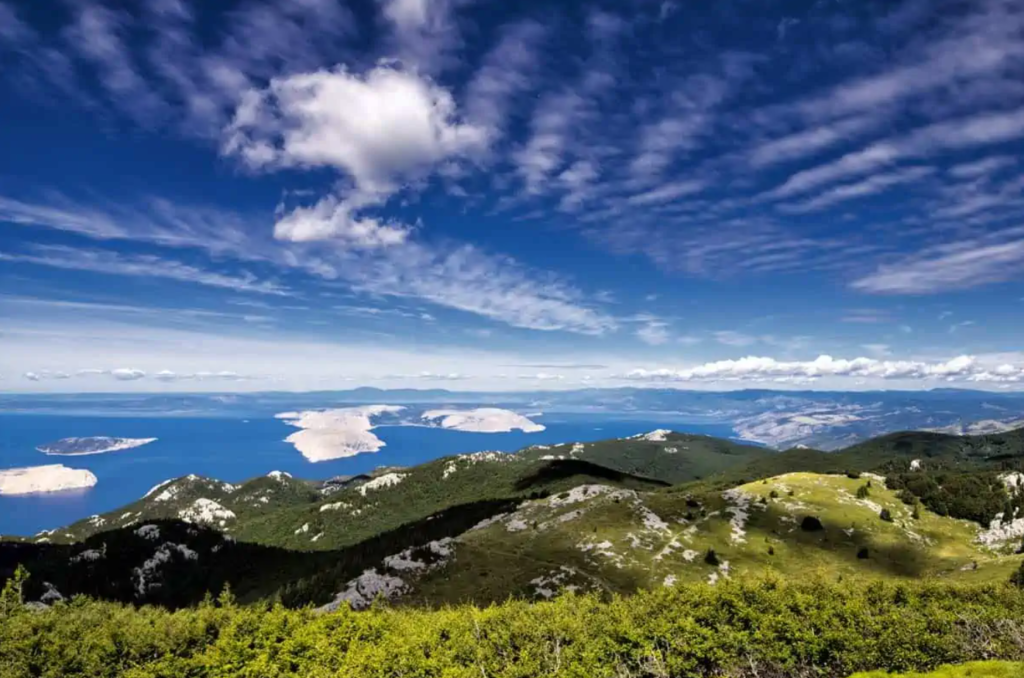
Located in the Velebit Mountain range, Northern Velebit National Park is a paradise for adventurers and nature lovers.
Spanning over 109 square kilometers, this protected area is a haven for outdoor enthusiasts, offering a diverse range of landscapes, flora, and fauna.
One of the park’s most notable features is its magnificent karst landscape. Velebit’s limestone formations have been shaped by centuries of erosion, resulting in stunning cliffs, deep canyons, and mesmerizing underground caves.
One such wonder is the Manita Peć cave, a fascinating labyrinth of stalactites and stalagmites stretching over 175 meters. Exploring this underground marvel is an unforgettable experience.
For hikers and mountaineers, the park offers an extensive network of trails that wind through its diverse terrain.
The Premužić Trail, named after its creator, is popular among visitors. This 57-kilometer-long path showcases the park’s most scenic vistas, including panoramic views of the Adriatic Sea and the surrounding islands.
Whether you’re a seasoned trekker or a casual nature enthusiast, there’s a trail suited to your skill level, ensuring an adventure that matches your capabilities.
Wildlife enthusiasts will be thrilled by the abundance of species found in Northern Velebit National Park. The area is home to rare and endangered animals such as the Eurasian lynx, brown bear, and gray wolf.
Birdwatchers will delight in spotting species like the golden eagle, griffon vulture, and peregrine falcon soaring through the skies.
The park’s diverse ecosystems, ranging from dense forests to alpine meadows, provide a habitat for various flora and fauna, making it a biodiversity hotspot.
In addition to its natural wonders, the park is also a hub for scientific research.
The Croatian Academy of Sciences and Arts operates a research station within the park, allowing scientists to study the region’s unique geological and biological features.
This collaboration between researchers and park authorities contributes to a better understanding of the area’s ecology and supports conservation efforts.
To access the park, visitors can purchase tickets at the entrance. The park offers various guided tours, including educational hikes and wildlife spotting excursions.
The Premužić Trail is a must-visit, offering breathtaking views of the surrounding peaks and valleys. For the more adventurous, trekking to the peak of Zavižan provides a panoramic reward.
Essential gear for Northern Velebit National Park includes sturdy hiking boots, appropriate clothing for changing weather conditions, a backpack with snacks and water, a map, and a compass.
When visiting the North Velebit National Park, there are several tips to keep in mind to enhance your experience. Here are some suggestions:
- Plan ahead: Before visiting the park, research its attractions, trails, and facilities. Make a note of any specific areas you want to explore or activities you wish to participate in. This will help you maximize your time and make the most of your visit.
- Check the weather: North Velebit National Park weather can be unpredictable, so it’s essential to check the forecast before heading out. Pack appropriate clothing and gear, including rain gear, sturdy shoes, and layers to accommodate changing temperatures.
- Obtain a map and information: Upon entering the park, get a detailed map and any available brochures or information from the visitor center. Familiarize yourself with the park’s boundaries, trails, and regulations to ensure a safe and enjoyable visit.
- Choose suitable trails: North Velebit National Park offers a variety of hiking trails catering to different difficulty levels and interests. Select trails that align with your fitness level and available time. Some popular routes include the Premužić Trail and the Zavižan-Balinovac-Velika kosa loop.
- Carry essentials: When hiking in the park, always carry essentials such as water, snacks, a first aid kit, a map, and a compass or GPS device. Bringing a flashlight, insect repellent, sunscreen, and a hat for sun protection is also a good idea.
- Respect the environment: Help preserve the park’s natural beauty by following Leave No Trace principles. Take your trash, stay on designated trails, and avoid disturbing wildlife or plants. Respect any regulations or restrictions implemented by the park authorities.
- Wildlife safety: North Velebit National Park is home to various wildlife species, including bears, wolves, and lynxes. While encounters are rare, educating yourself about how to react in such situations is important. Make noise while hiking to avoid surprising animals, and if you encounter one, maintain a safe distance and never feed or approach them.
- Photography opportunities: The park offers breathtaking landscapes and scenic views, so bring your camera or smartphone to capture the beauty. However, remember to be considerate of others and avoid obstructing paths or viewpoints while taking photographs.
- Camping and accommodation: If you plan to stay overnight, North Velebit National Park provides campsites and mountain huts. Make reservations in advance if necessary, as availability may vary depending on the season. Alternatively, you can find accommodation in nearby towns like Senj or Otočac.
- Check for park updates: Before visiting, visit the official website or contact the park authorities for any updates on trail closures, events, or special regulations. This will help you plan your visit accordingly and avoid any surprises.
Where to buy online tickets for Croatia’s National Parks?
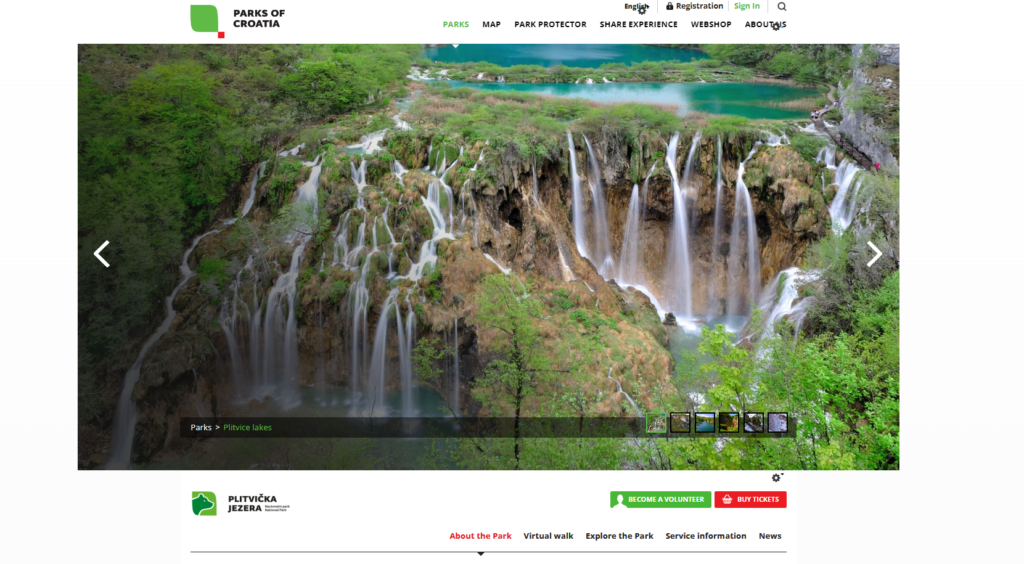
To buy online tickets for Croatia’s National Parks, several reliable platforms and official websites offer this service.
One of the most popular options is the Croatian National Parks’official website, which provides comprehensive information about each park and allows visitors to purchase tickets online.
This website is the official source for purchasing tickets and offers a secure and convenient way to plan your visit. Various reputable travel websites and tour operators provide Croatia’s National Parks online ticketing services.
These platforms often offer bundled packages that include transportation, guided tours, and tickets to the parks, providing a hassle-free experience for travelers.
Researching and comparing prices and services offered by different platforms is recommended to find the best option that suits your needs.
Furthermore, it’s important to check the official websites of the specific national parks you wish to visit, as some parks may have their own online ticketing systems.
Overall, buying online tickets for Croatia’s National Parks is a convenient and efficient way to secure your visit in advance, ensuring a smooth experience when exploring the stunning natural beauty of Croatia.
Essential Gear for Croatia’s National Parks
Packaging the right gear is important to enjoy your visit to Croatia’s national parks fully. Here are some essential items to consider:
- Comfortable footwear: As most national parks in Croatia feature hiking trails, sturdy and comfortable shoes are a must. Opt for hiking boots or trail shoes with good traction and ankle support.
- Waterproof clothing: Given the abundance of waterfalls and lakes in Croatia’s national parks, it’s advisable to bring waterproof or quick-drying clothing. This will keep you comfortable during rainy weather or if you plan to get close to the waterfalls.
- Sun protection: Croatia’s sunny climate calls for adequate sun protection. Don’t forget to pack sunscreen, a wide-brimmed hat, and sunglasses to shield yourself from the sun’s rays.
- Insect repellent: While Croatia’s national parks offer pristine natural landscapes, they are also home to various insects. Carry a reliable insect repellent to avoid mosquito bites and other insect annoyances.
- Water and snacks: Exploring the national parks can be physically demanding, so staying hydrated and energized is important. Carry a reusable water bottle and pack some snacks to keep you fueled during your adventures.
How many national parks are there in Croatia?
Among its natural treasures, Croatia boasts a total of eight national parks.
These protected areas are recognized for their exceptional beauty, ecological significance, and cultural value.
Each national park in Croatia offers visitors a unique experience, showcasing the country’s rich biodiversity and stunning natural landscapes.
With its diverse flora and fauna, dramatic geological formations, and opportunities for outdoor recreation, Croatia’s national parks are a testament to the country’s commitment to preserving its natural wonders for future generations to enjoy.
What is the most visited national park in Croatia?
One particular national park stands out as the most visited in Croatia: Plitvice Lakes National Park.
Located in the central part of the country, Plitvice Lakes National Park is a mesmerizing wonderland of cascading waterfalls, pristine lakes, lush forests, and diverse wildlife.
This UNESCO World Heritage Site enthralls visitors with its enchanting turquoise lakes interconnected by a network of cascades and waterfalls, creating a truly awe-inspiring spectacle.
Exploring the park’s well-maintained wooden walkways and bridges, visitors can immerse themselves in the serene beauty of the emerald-hued lakes and marvel at the abundant flora and fauna that call this place home.
Each year, Plitvice Lakes National Park attracts millions of tourists who witness its magical allure, making it the most visited national park in Croatia and a must-visit destination for nature lovers and adventure seekers alike.
Conclusion
Croatia’s national parks offer a captivating journey through diverse landscapes, from majestic waterfalls and tranquil lakes to rugged mountains and picturesque islands.
When planning a visit, purchasing tickets in advance, selecting guided tours, and packing the essential gear will ensure a smooth and enjoyable experience.
Whether you’re a nature lover, an adventure enthusiast, or a history buff, Croatia’s national parks are bound to leave you in awe of the country’s natural and cultural riches.
So, pack your bags, embark on an unforgettable journey, and immerse yourself in the breathtaking beauty of Croatia’s national parks.
You Might Also Like:
- 10 Best Croatian Wine Hotels and Winery Accommodations
- Michelin Star Restaurants in Croatia: Ultimate Guide
- Top 6 Eco-Friendly Accommodations in Croatia
- Top 12 Unique Accommodations in Croatia
- Top 8 Lesser-Known Croatian Islands
- Best Wine Tours In Croatia
- 7 Most Unique Croatian Vineyards
- Ultimate Travel Guide to Korčula
- Top 15 Places to Visit in Croatia
- The Ultimate Croatian Food Tours and Cooking Classes
Comments
Write a comment
You must be logged in to post a comment.


























excellent article, everything you need in one place 🙂